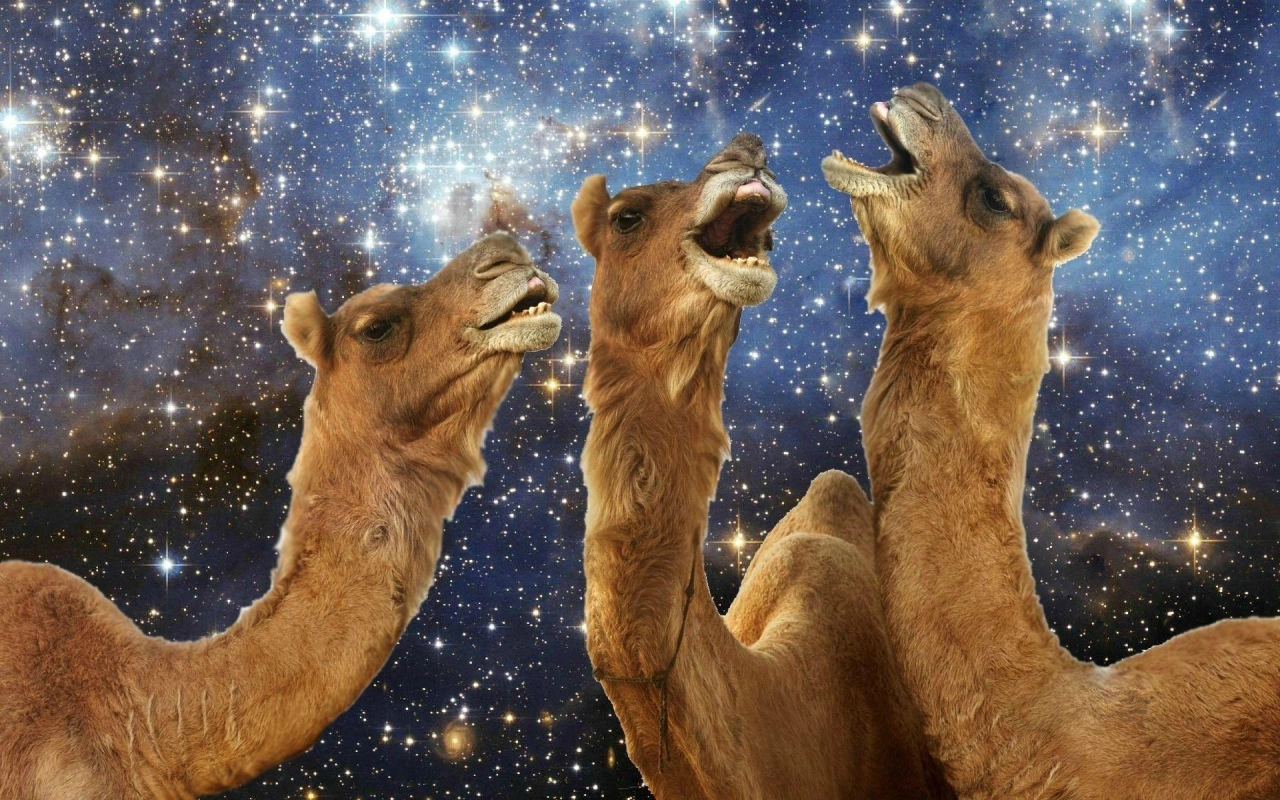The sable (Martes zibellina) is an enchanting creature that roams the lush forests of Russia, Mongolia, and China. Renowned for its exquisite fur, this small omnivorous mammal captivates with its elegant presence.
The sable’s fur ranges from delicate shades of light to rich depths of dark brown, boasting a velvety texture that is both soft and luxurious.
With its elongated body, slender head, and enchanting eyes, the sable possesses an innate grace that is both captivating and elusive. Agile climbers, they navigate the dense foliage with ease, using their keen senses of sound and scent to locate prey and navigate their surroundings.
While sable fur has been cherished for centuries, adorning clothing and reflecting the beauty of nature, the conservation status of the sable remains stable.
As guardians of the forest, sables continue to inspire awe and admiration, their presence reminding us of the intricate and fragile balance of the natural world.
This article delves into the intriguing world of the sable, exploring its characteristics, habitat, behavior, and conservation status.
Scientific Classification
| Kingdom | Animalia |
| Phylum | Chordata |
| Class | Mammalia |
| Order | Carnivora |
| Family | Mustelidae |
| Genus | Martes |
| Scientific Name | Martes zibellina |
Appearance and Features of the Sable
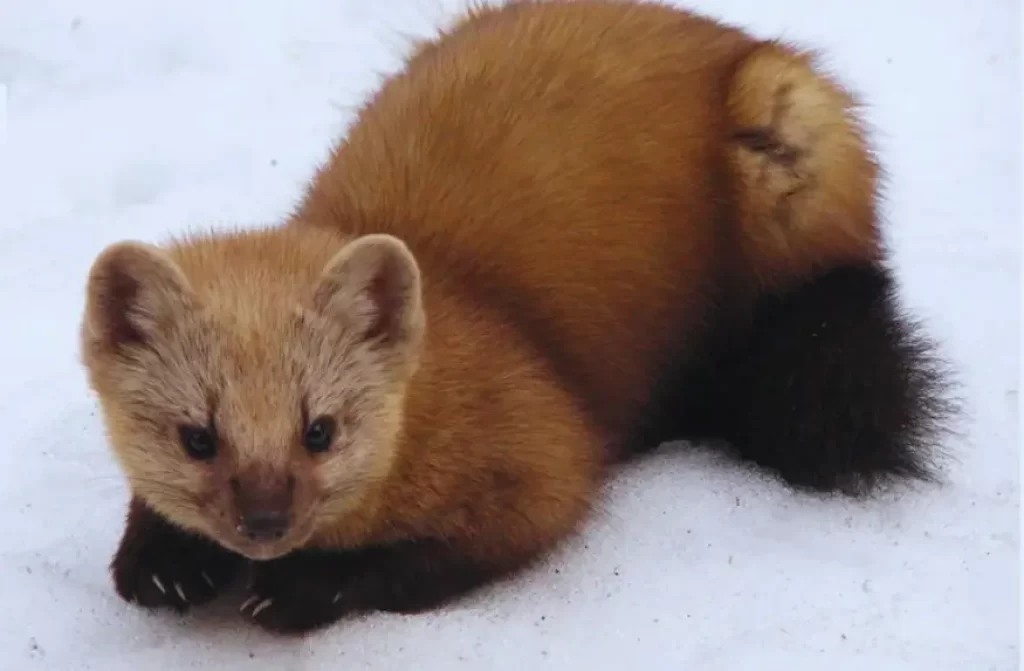
The sable boasts a sleek body and captivating appearance. With its luxurious fur ranging from dark brown to black, a bushy tail for balance and communication, and keen senses, including sharp eyes and pointed ears, this agile mammal epitomizes grace in its natural habitat.
Let’s delve deeper into the sable’s appearance and unravel the visual wonders of this amazing creature.
Size and Proportions
Sables have a sleek and slender body, typically measuring around 30 to 50 centimeters in length.
The bushy tail adds an additional 15 to 25 centimeters to their overall length. Males are slightly larger than females, and they weigh between 1 to 2 kilograms.
Fur
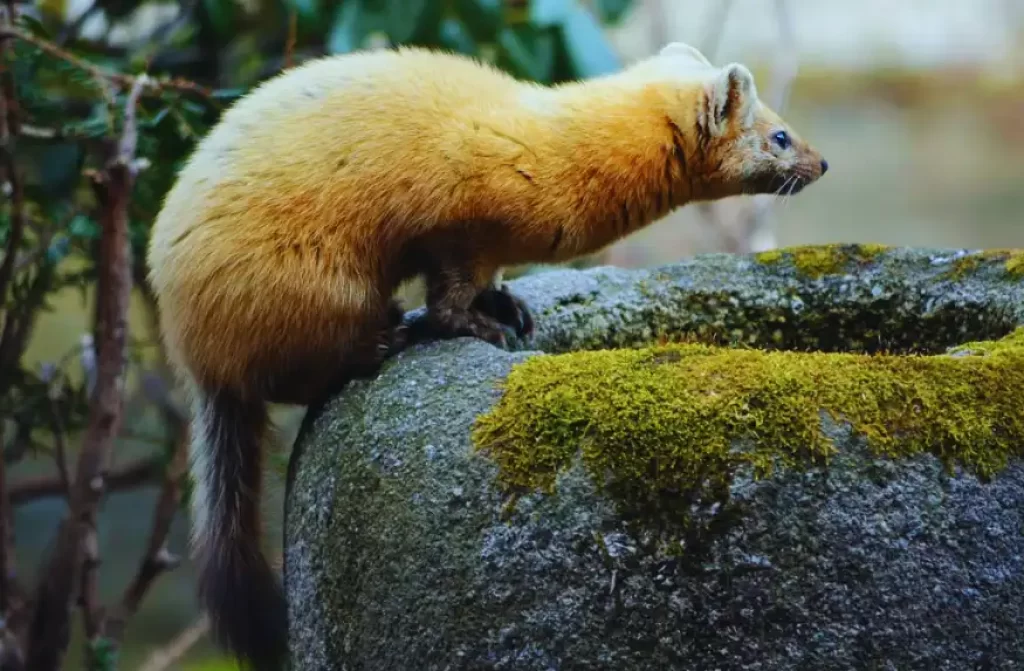
The most striking feature of the sable is its fur, which is known for its dense and lustrous quality. The fur color can vary, ranging from dark brown to a rich, deep black. Different subspecies may display geographic variations in fur coloration.
Generally, the fur is lighter ventrally (on the underside) and darker on the back and legs. Some sables, like the Japanese subspecies, have black markings on their legs and feet.
There is also a light patch of fur on their throat, which can be gray, white, or pale yellow. Overall, the fur of sables is softer and silkier compared to that of American martens.
Comparison to Other Mustelids
Sables have similarities to pine martens in size and appearance, but there are some distinct differences. Sables have more elongated heads, longer ears, and proportionately shorter tails compared to pine martens. When compared to pine martens, their skulls are larger, more robust, and have more arched zygomatic arches (cheekbones).
Winter and Summer Pelage
Sables exhibit a difference in fur density between their winter and summer coats. The winter pelage is longer and more luxurious, providing better insulation during colder months.
These distinctive features contribute to the sable’s unique and captivating appearance, making it a fascinating creature to study and appreciate.
Habitat and Distribution of the Sable
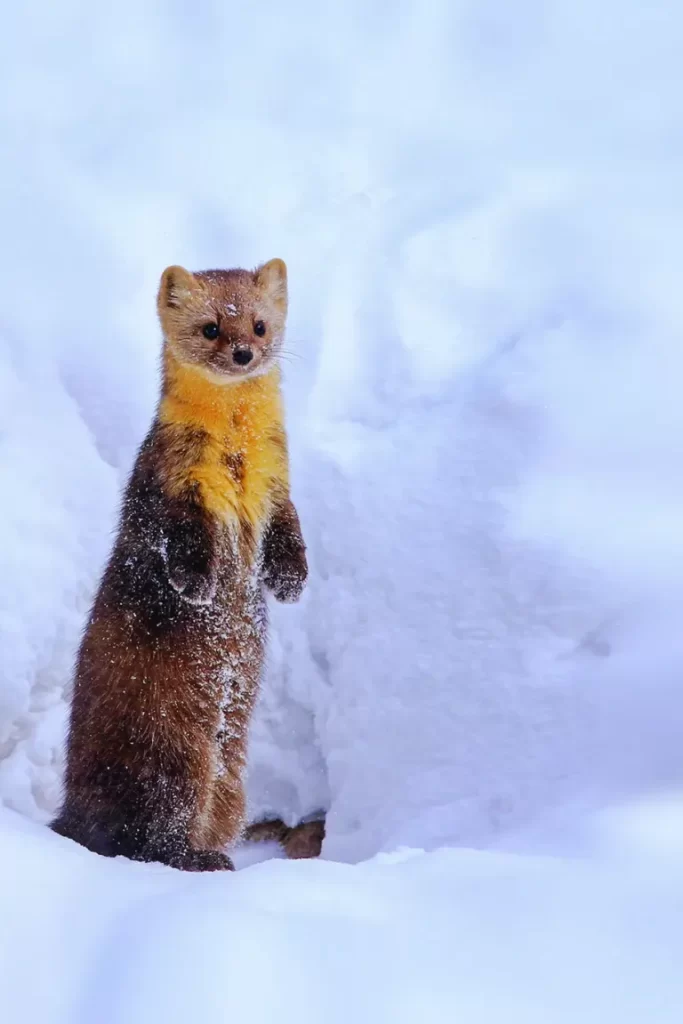
Native Range
Sables are primarily found in the vast boreal forests of Siberia and northern Asia. These regions are characterized by cold climates and snowy winters, which are well-suited to the sable’s adaptations.
They inhabit areas with dense forests and proximity to rivers, providing them with suitable habitats for finding prey and establishing dens. Sables are also known to exist in parts of Europe, including Russia, Ukraine, and Poland.
Distribution in Russia

In Russia, the distribution of sables has been shaped by large-scale reintroduction efforts. Between 1940 and 1965, approximately 19,000 sables were reintroduced into various regions.
Their range extends northward to the tree line and reaches southward to around 55-60° latitude in western Siberia and 42° latitude in the mountainous areas of eastern Asia.
In the western part of Russia, sables can be found in the Ural Mountains, where they coexist with European pine martens. They are also present on Sakhalin Island.
Distribution in Mongolia and China
Sables can be found inhabiting the magnificent Altai Mountains of Mongolia, as well as the lush forests that surround the enchanting Lake Hovsgol. These areas are contiguous with the Trans-Baikal boreal forest region, known for producing the most valuable sable pelts.
In China, sables have a limited range in the Xinjiang Uygur Autonomous Region.
In northeastern China, their presence is restricted to the Greater Khingan Range, with some suspected persistence in the Lesser Khingan Range in eastern Heilongjiang. Sables are also found in Hokkaido (Japan) and on the Korean Peninsula.
Subspecies Variation
The appearance of sables can vary significantly across different geographic localities, leading to debates about the number of distinct subspecies. “Mammal Species of the World” recognizes seventeen subspecies, while other sources suggest a range of seven to thirty subspecies.
The variability in fur coloration and physical characteristics among different populations adds to the complexity of understanding the sable’s distribution patterns.
Behavior of Sables
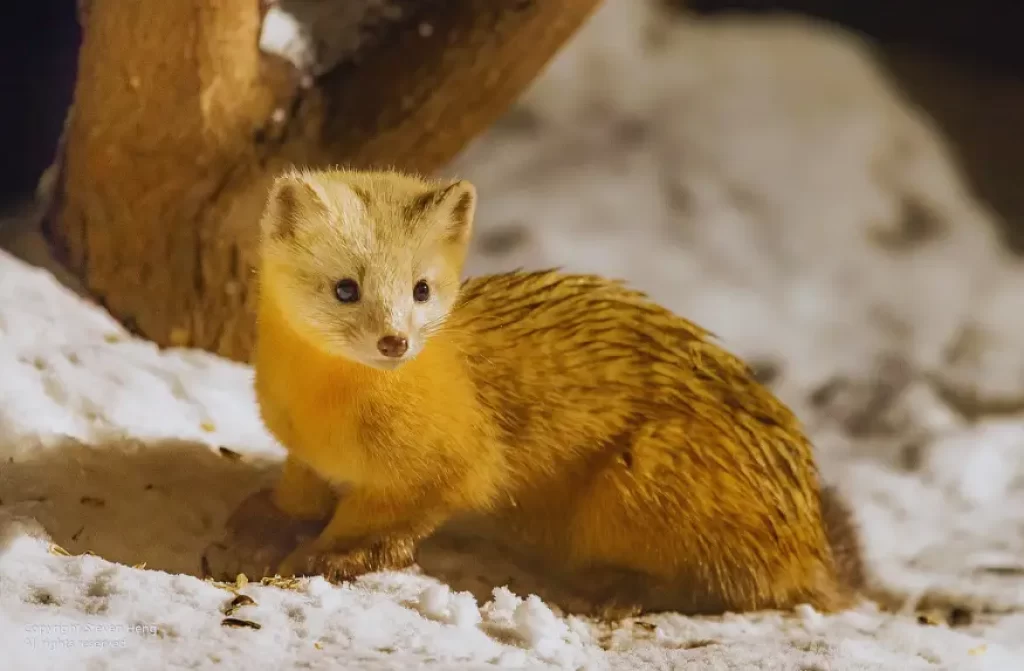
Nocturnal Nature
Sables are primarily nocturnal creatures, preferring to be active during the night. They are well-adapted to low-light conditions and have excellent night vision. During the day, they usually rest in their dens or find sheltered spots in dense vegetation.
Solitary and Territorial
Sables are solitary animals, with each individual maintaining its own territory. The size of their territories can vary from 4 to 30 square kilometers, depending on factors such as local terrain and food availability. They mark their territories with scent produced by glands on their abdomen, signaling other sables to stay away.
Habitat and Home
Sables inhabit dense forests dominated by spruce, pine, larch, Siberian cedar, and birch. They prefer areas with access to rivers and thick woods, where they can find suitable den sites.
Their burrows are often located near riverbanks or among tree roots, providing them with secure and hidden retreats. Sables are skilled climbers, allowing them to navigate trees and cliffs with ease.
The Seasonal Diet of sables
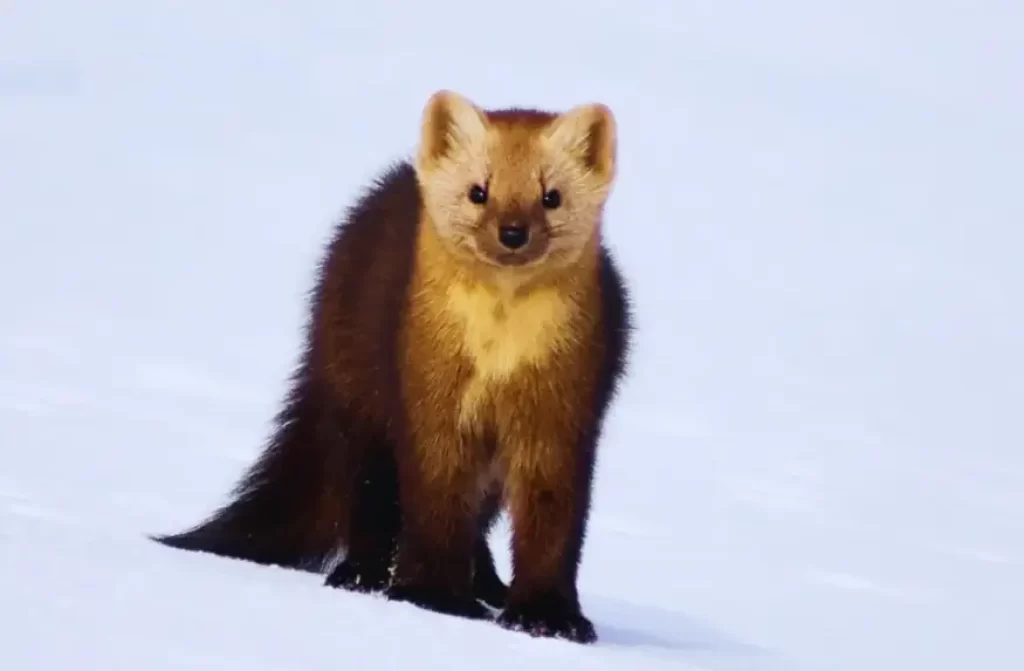
Primary food Sources for Sables During the summer
During the summer months, sables rely on a diverse array of food sources to sustain themselves. Their primary diet consists of mountain hares, which provide a substantial portion of their energy intake. Additionally, sables opportunistically hunt and consume other small mammals like voles, mice, and shrews.
These agile predators take advantage of the abundance of prey in their habitat, utilizing their sharp teeth and agile movements to capture and devour their targets.
How do sables Adapt their diet during the Winter Months?
As winter descends upon the region, sables face harsher environmental conditions that limit their hunting capabilities.
Frost and snow confine them to their retreats, requiring them to modify their diet accordingly. In this season, sables rely more heavily on foraging for sustenance.
Their diet shifts to include a wider range of food sources, such as wild berries like cranberries and lingonberries, which provide vital nutrients and energy.
Additionally, sables prey upon rodents, including voles and mice, as well as mountain hares that may still be available. In times of scarcity, sables may even resort to capturing small musk deer, whose limited mobility in winter makes them vulnerable.
Scavenging behavior exhibited by Sables
Sables display a fascinating scavenging behavior as they capitalize on the remains of larger predator kills. They possess a keen sense of smell that allows them to detect the scent of recent predator activity.
By tracking the tracks, scents, and sounds left behind by wolves, bears, and other large carnivores, sables can locate the carcasses of their kills.
They scavenge on these leftovers, ensuring they don’t let any potential source of food go to waste. This behavior demonstrates the resourcefulness and adaptability of sables as they exploit available food resources within their ecosystem.
Other unusual food Sources that Sables occasionally Consume
While sables primarily rely on small mammals and berries for sustenance, they showcase occasional dietary flexibility. In their search for nutrition, sables have been observed catching fish using their nimble front paws.
They skillfully scoop fish out of water sources, showcasing their adaptability and opportunistic hunting abilities. Furthermore, sables have been known to consume gastropods such as slugs when encountering them, highlighting their ability to diversify their diet when suitable prey items are encountered in their surroundings.
Hunting and Predators
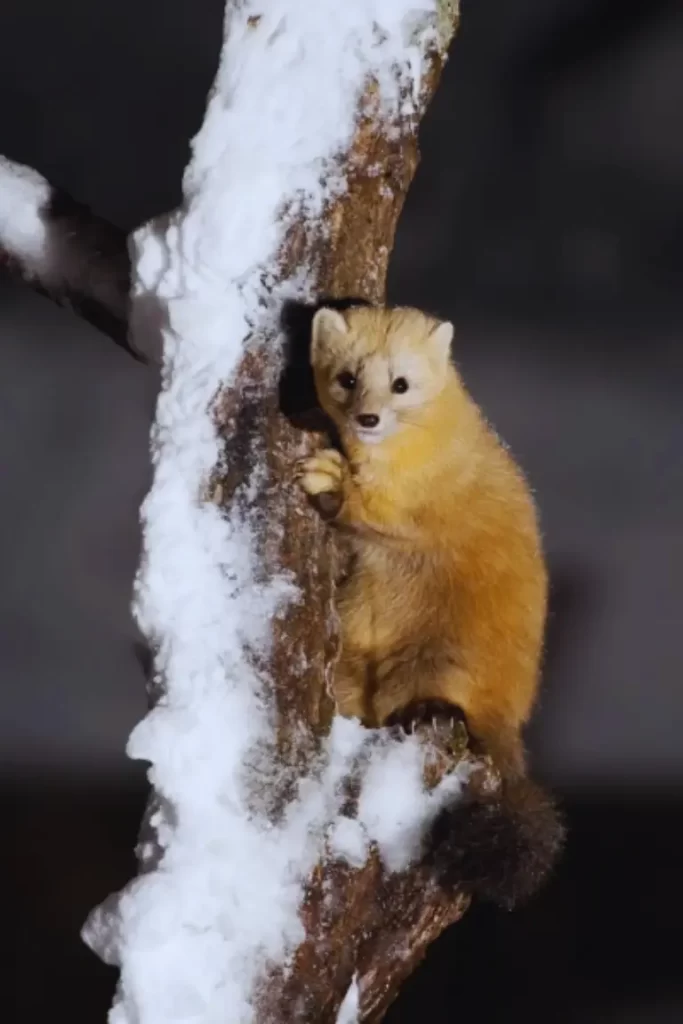
Sables possess exceptional hearing, finely tuned to detect even the faintest sounds, allowing them to rely on both sound and scent in their hunting endeavors.
These agile creatures showcase remarkable hunting skills, demonstrating their ability to successfully capture prey larger than their own size.
Their versatile diet encompasses a variety of food sources, including small mammals, birds, fish, and even eggs. Now, let’s delve deeper into the fascinating world of sables, exploring their prey, predators, and gaining a better understanding of these remarkable animals.
How do Sables use their Senses to hunt?
Sables possess acute hearing and rely on sound and scent to locate and successfully hunt their prey. Their well-developed sense of hearing allows them to detect faint rustlings and movements, enabling them to pinpoint the location of potential prey.
Additionally, their keen sense of smell plays a crucial role in tracking and detecting the presence of small mammals and birds. By utilizing these heightened senses, sables gain an advantage in their hunting endeavors, enhancing their efficiency in capturing elusive prey.
Types of prey that Sables Successfully can Capture
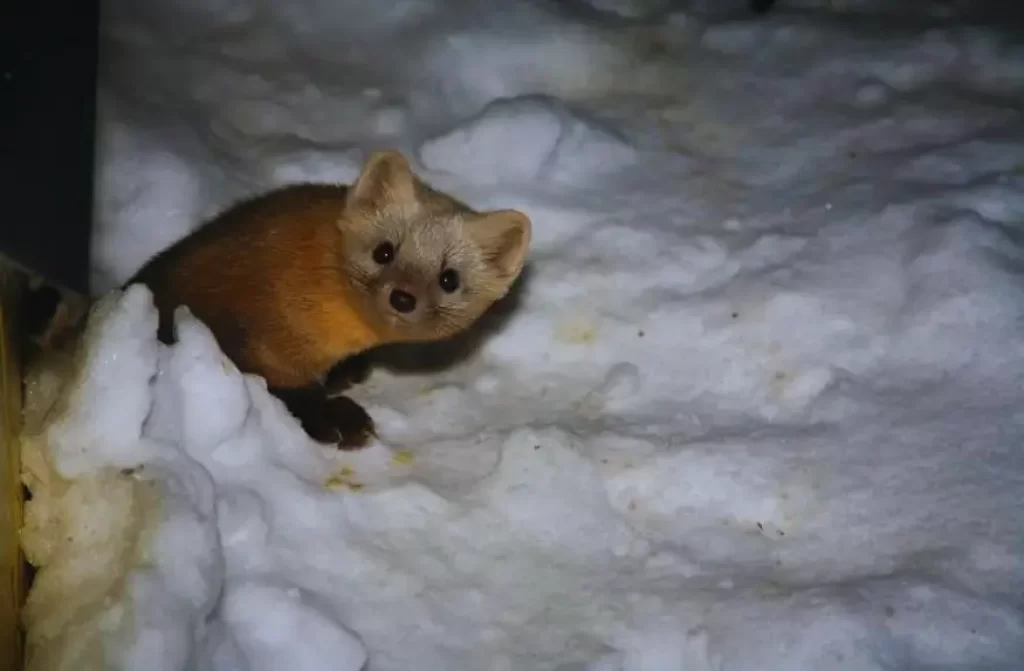
Sables exhibit remarkable agility and hunting prowess, enabling them to capture a wide range of prey. While their primary targets are small mammals such as rodents (voles, mice, shrews) and mountain hares, they also possess the ability to take down prey larger than themselves.
Sables have been observed hunting and capturing birds, including ground-nesting species, utilizing their quick reflexes and dexterous movements.
They are also skilled at seizing fish, using their paws to scoop them out of water bodies, showcasing their versatility as hunters. Additionally, sables are adept at locating and raiding nests to consume eggs, further diversifying their diet.
Some of the predators of Sables
Despite their hunting prowess, sables face predation risks from a variety of larger carnivores within their ecosystem.
Predators such as wolves, foxes, wolverines, tigers, lynxes, and large birds of prey like eagles and owls are potential threats to sables. These predators are highly skilled hunters in their own right and are capable of overpowering sables if given the opportunity.
The presence of these predators plays a crucial role in maintaining the natural balance of the ecosystem, regulating sable populations, and contributing to the overall health and diversity of the wildlife community.
What role do these predators play in the ecosystem?
The predators that pose a threat to sables play an essential role in the intricate web of the ecosystem. By preying on sables and regulating their populations, larger carnivores help maintain a balance within the ecosystem.
This ecological equilibrium ensures that sable populations do not become overly abundant, which could have negative consequences for other species and the overall ecosystem health.
Additionally, predation acts as a selective pressure on sables, driving evolutionary adaptations that shape their behaviors and characteristics, ultimately contributing to the intricate biodiversity and dynamics of the Altai Mountains and surrounding forests.
Reproduction of Sables
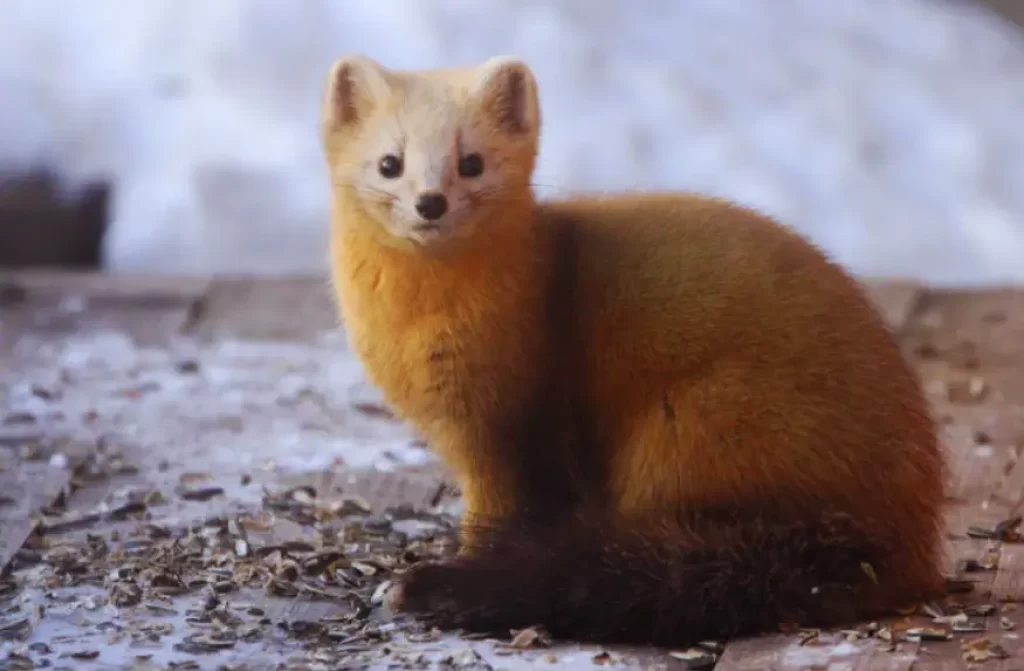
Mating Behavior
The mating season for sables generally occurs between June and August, although the exact timing can vary depending on the geographic location. During courtship, sables engage in playful and energetic behaviors such as running, jumping, and “rumbling” sounds similar to cats.
Male sables create shallow grooves in the snow, often accompanied by urination, as part of their courtship displays. Males can engage in violent fights with each other to compete for females.
Estrus and Gestation
Female sables enter estrus in the spring. The mating process can last for several hours, and during this time, the female is inseminated by the male.
Interestingly, the fertilized blastocyst does not immediately implant into the uterine wall of the female. Instead, implantation occurs eight months later, which is unique among mammals. The actual gestation period lasts between 245 to 298 days, but the embryonic development requires only 25 to 30 days.
Nesting and Birth
Sables give birth to their offspring in tree hollows, which provide a safe and secluded environment for the newborns.
The females build nests using materials such as moss, leaves, and dried grass. Litters usually consist of one to seven young, although litters of two or three are more common. The male sable assists the female during this time by defending their territory and providing food.
Newborn Cubs
When born, sable cubs are small and helpless. They have their eyes closed, and their skin is covered with a very thin layer of hair. The newborn cubs weigh between 25 and 35 grams and measure around 10 to 12 centimeters in length.
Their eyes typically open between 30 and 36 days after birth, and shortly after that, they leave the nest. At around seven weeks, the cubs are weaned and begin consuming regurgitated food from their parents. Sables reach sexual maturity at around two years of age.
Life Span and Hybridization
Sables have been reported to live up to 22 years on fur farms and up to 18 years in the wild. In certain areas where sables and pine martens overlap, interbreeding between the two species can occur.
These hybrid offspring, known as kiduses, exhibit some characteristics of both parent species.
Kiduses are slightly smaller than pure sables and have coarser fur but share similar markings and a long bushy tail. While kiduses are typically sterile, there have been rare instances where a female kidus successfully bred with a male pine marten.
11 Fun Facts about The sable (Martes zibellina)
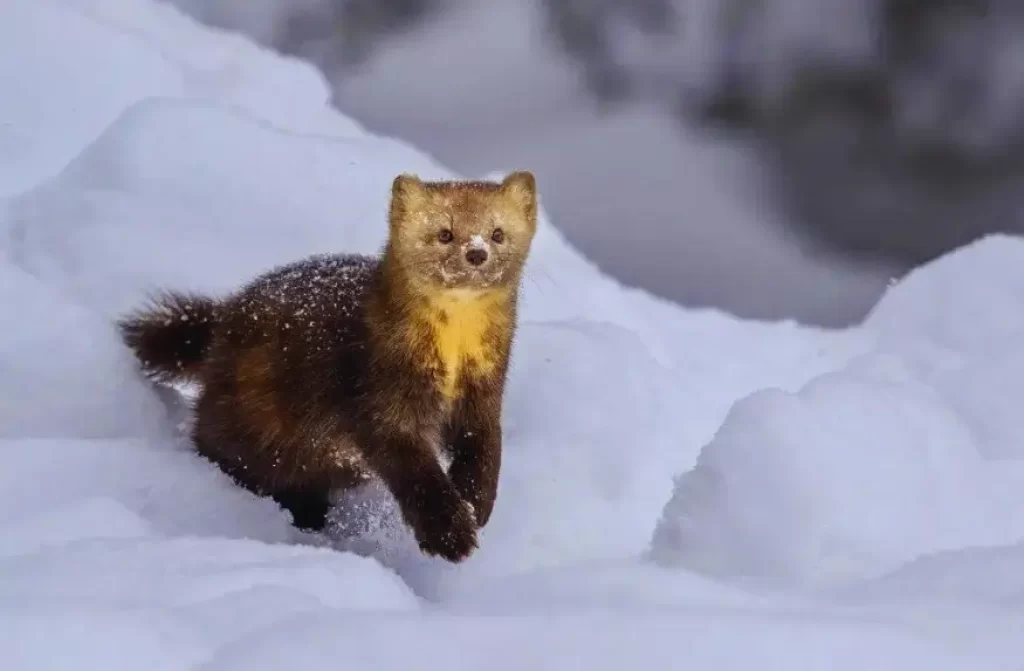
- Sables have a mischievous side! They are known for their playful nature and can often be seen engaging in games and frolicking around in their forest habitats.
- Despite their small size, sables are fearless when it comes to defending their territory. They will fearlessly stand up to larger predators to protect themselves and their young.
- Sables have a sweet tooth! Alongside their regular diet, they have been known to indulge in the occasional treat of wild berries and even have a fondness for honey.
- These little acrobats are skilled climbers and can navigate tree branches with remarkable agility. It’s not uncommon to spot them leaping from tree to tree with impressive grace.
- Sables are masters of disguise. Their luxurious fur helps them blend seamlessly into their surroundings, providing excellent camouflage and making them stealthy hunters.
- Sables are exceptional swimmers! They have the ability to dive and swim underwater, using their streamlined bodies and partially webbed feet to move swiftly through rivers and lakes.
- Sables are avid explorers. They have a curious nature and love to investigate their environment, often venturing into new territories and expanding their range.
- Did you know that sables have their own “perfume”? They possess scent glands that they use to mark their territory and communicate with other sables through unique scent signals.
- Sables have a secret superpower – their fur is incredibly insulating, allowing them to withstand freezing temperatures in their cold habitats.
- These adorable creatures have a family-oriented lifestyle. They are known to be nurturing parents, with both the mother and father taking an active role in raising their offspring.
- Sables have captivated humans for centuries with their beautiful fur. In fact, they have been revered
Frequently Asked Questions
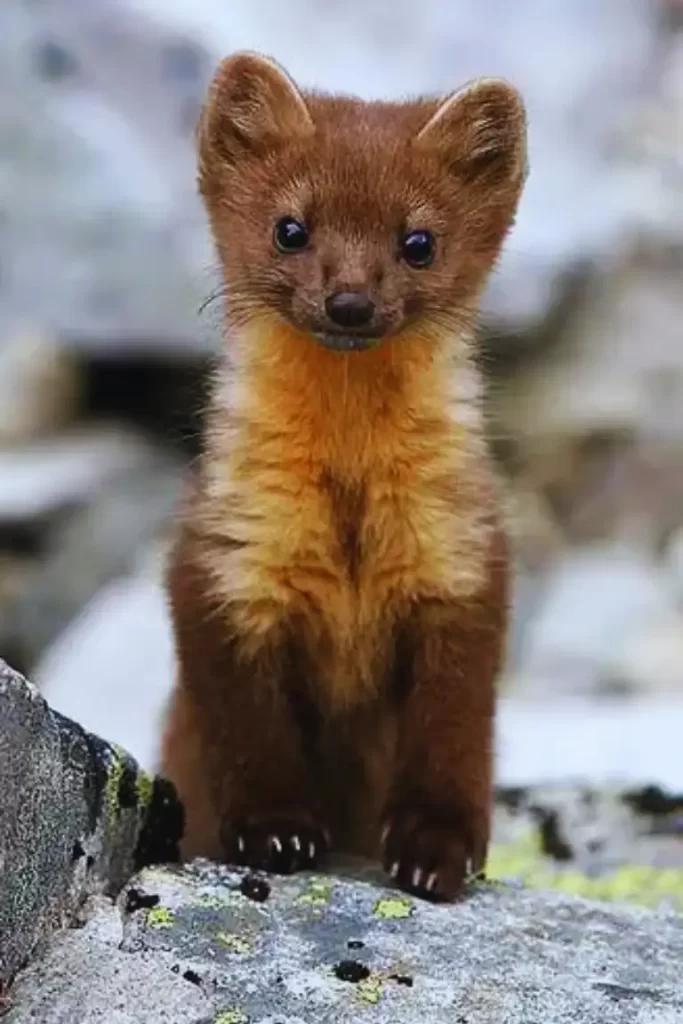
Are sables endangered?
Currently, sables are not considered endangered. Their populations remain stable, and they inhabit vast forested areas across their range. However, conservation efforts are still important to ensure their long-term survival and maintain their natural habitats.
Why is sable fur so highly valued?
Sable fur is highly valued for its exceptional quality. It is known for being incredibly soft, luxurious, and possessing a beautiful sheen. These characteristics, combined with its rarity and historical significance in the fur trade, contribute to its high demand in the fashion industry.
Do sables make good pets?
Sables are wild animals and, as such, do not make good pets. While they may appear cute and appealing, they have specific needs and behaviors that are difficult to meet in a domestic environment. Sables are highly active, require ample space to roam and climb, and have specialized dietary and enrichment requirements.
They are also known to have strong instincts and can exhibit aggressive or destructive behavior if not properly stimulated or allowed to engage in their natural behaviors.
Furthermore, keeping a sable as a pet may be illegal or restricted in many jurisdictions due to conservation concerns and wildlife protection laws.
It is important to respect and appreciate sables in their natural habitats and support conservation efforts to ensure their survival for future generations. If you are interested in learning more about sables, consider visiting wildlife sanctuaries, zoos, or educational programs where you can observe and appreciate these remarkable creatures in a responsible and ethical manner.
What color is sable?
Sable fur can vary in color, but it typically ranges from light to dark brown or black. The specific shade of sable fur can depend on factors such as the individual sable’s age, location, and genetics. The darker shades of sable fur are often highly prized for their rich and lustrous appearance.
How long do sables live as pets?
Sables are wild animals and are not typically kept as pets. Their natural behaviors, specific habitat requirements, and unique needs make them challenging to care for in a domestic setting.
Therefore, it is not common to find sables living as pets. However, in the rare cases where they are kept in captivity, their lifespan can vary.
With proper care, nutrition, and suitable living conditions, sables in captivity may live slightly longer than their wild counterparts, reaching up to 15 years. It’s important to note that owning a sable as a pet may be subject to legal restrictions and regulations, and it is crucial to research and follow the guidelines set by local authorities to ensure the well-being of the animal.
Do sables hibernate?
No, sables do not hibernate. They remain active throughout the year, even during the winter season. While they may reduce their activity and movements in colder months, they do not undergo a state of hibernation like some other animals.
Instead, sables adapt to the winter conditions by seeking shelter in their retreats and relying on available food sources in their habitats. Their dense fur provides insulation, helping them withstand the cold temperatures of their forested environments.
Are sables social animals?
Sables are mostly solitary animals, preferring to lead independent lives. However, they do engage in social interactions during the mating season and exhibit nurturing behavior towards their offspring. These interactions play a vital role in the continuation of their species and contribute to their overall social dynamics in the wild.



